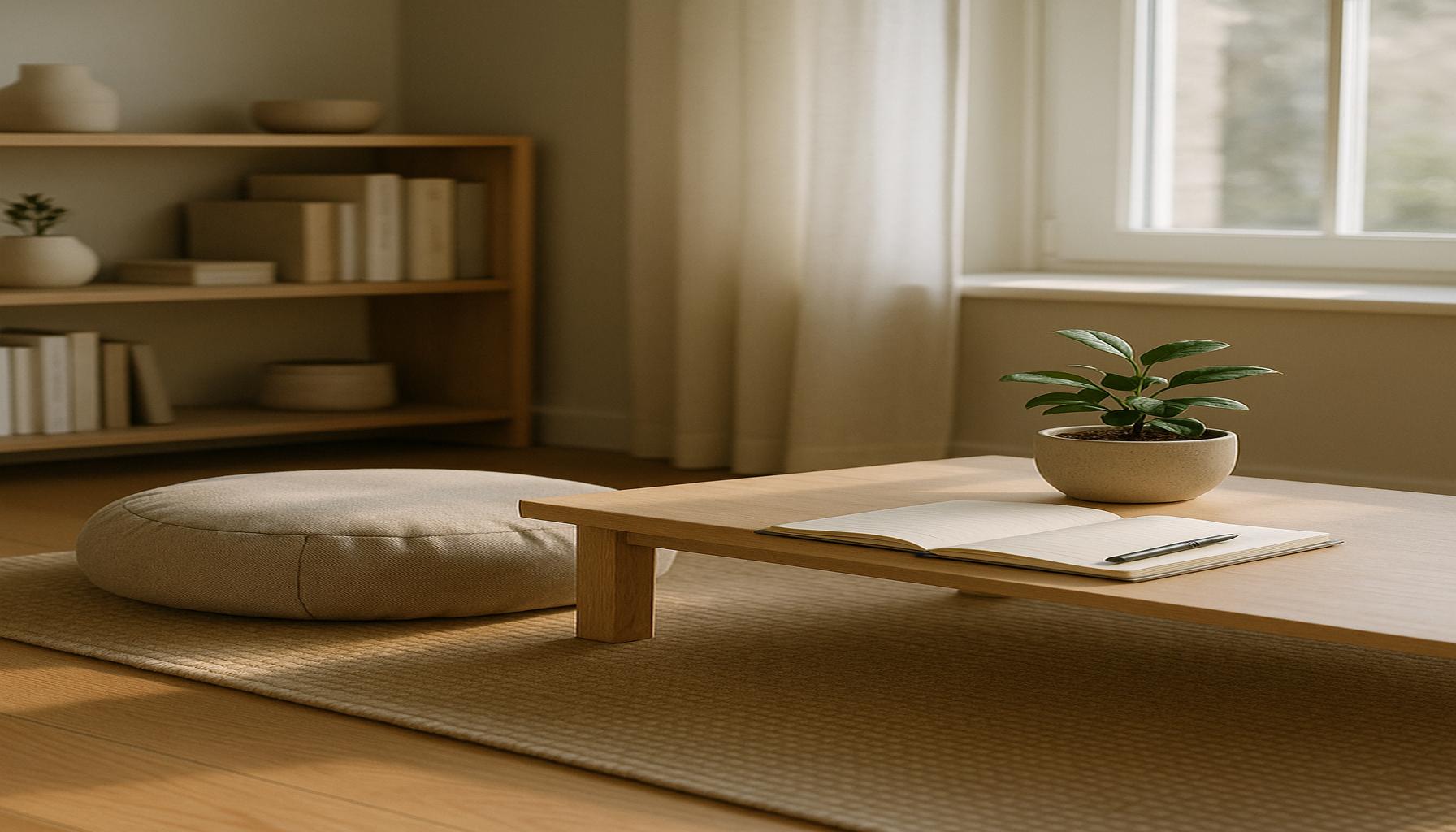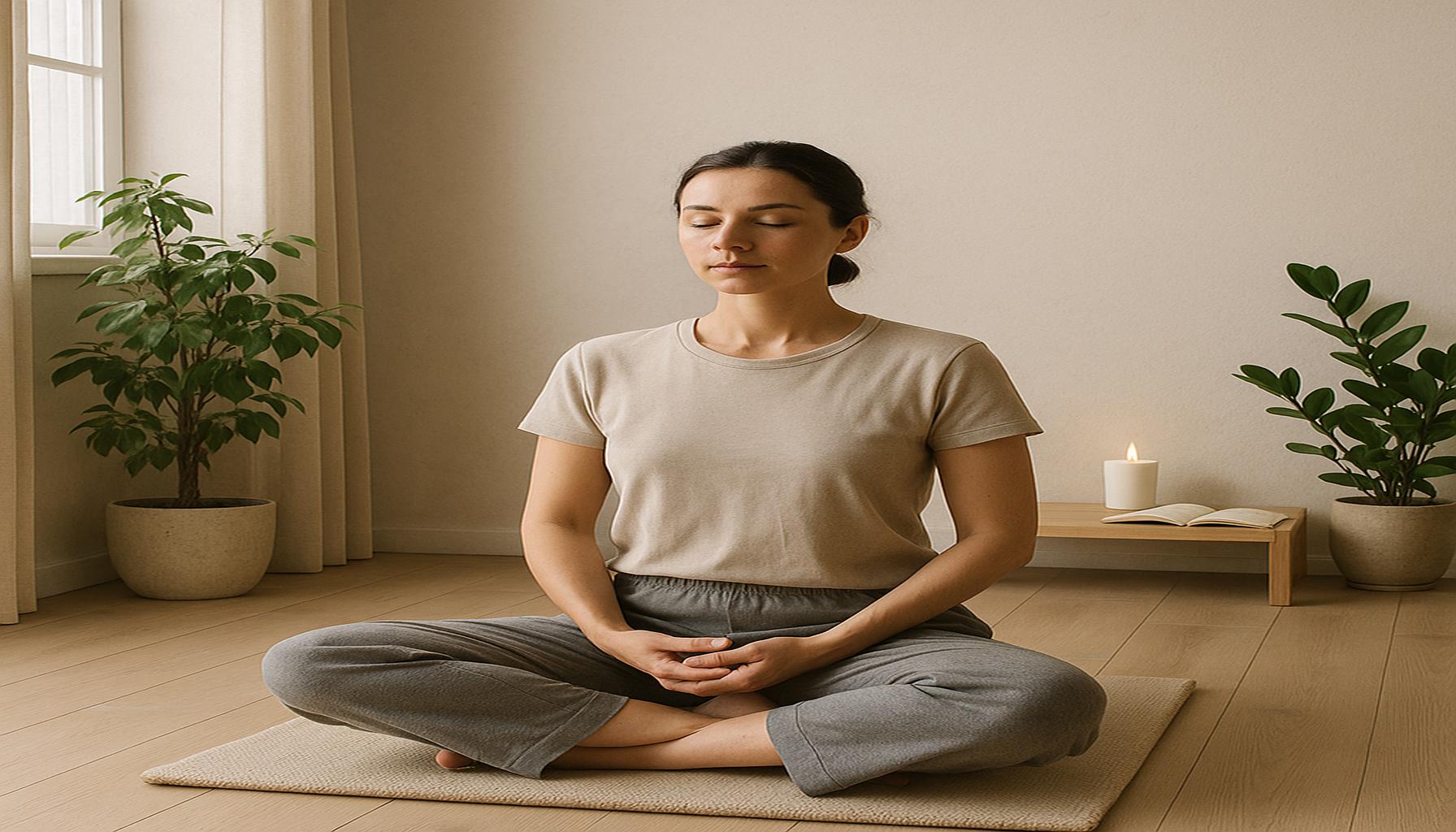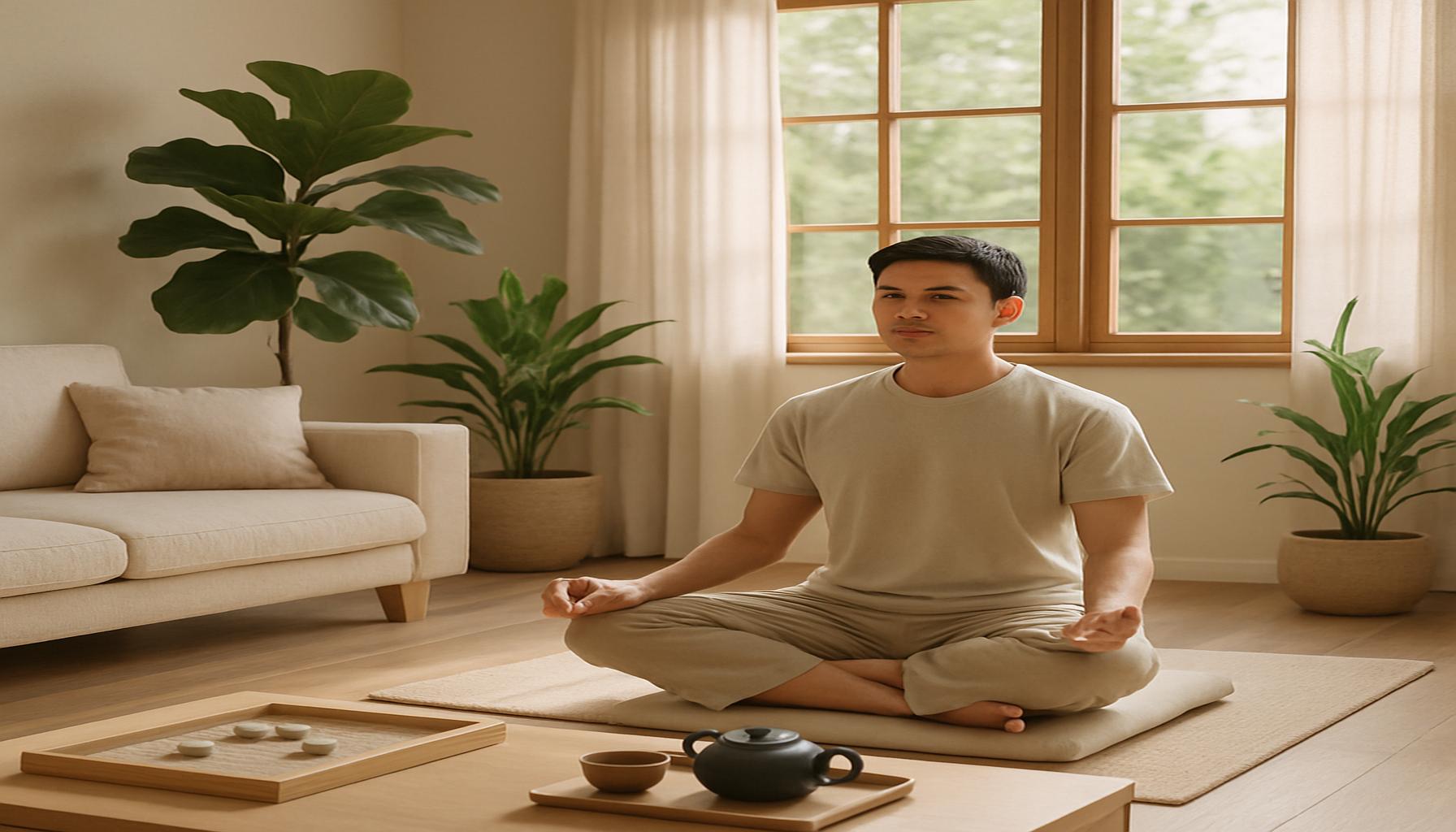Transform Your Space and Mind with Mindfulness and Personal Organization
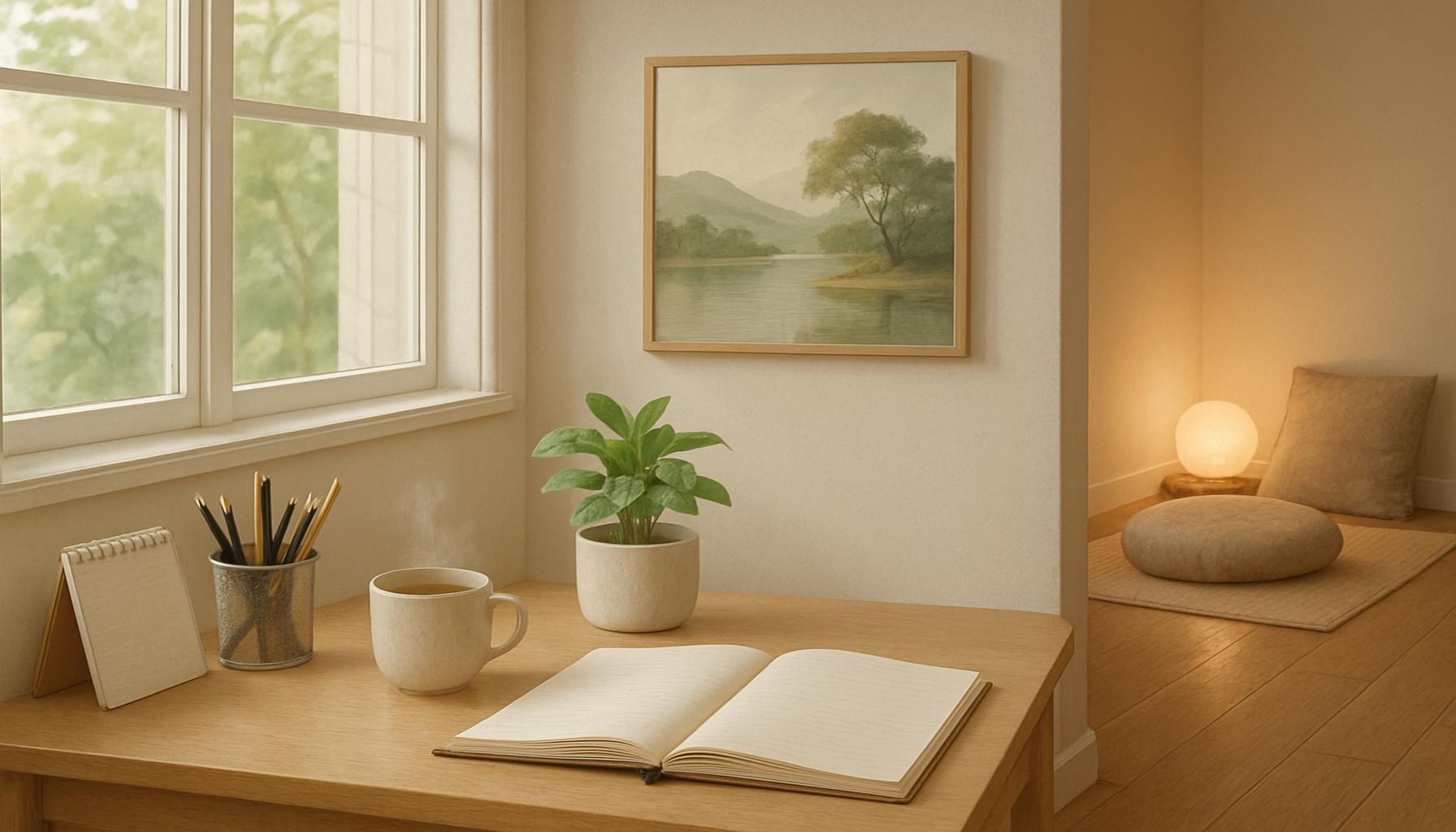
Discover Mindfulness in Personal Organization
In the bustling chaos of modern life, many of us yearn for clarity and simplicity. This pursuit often leads us to the principles of minimalism, a practice that prioritizes the essentials by removing excess. However, minimalism on its own might not suffice to create lasting tranquility. This is where the art of mindfulness steps in, offering a holistic approach that enables us to declutter not just our physical environments but our mental landscapes as well.
Mindfulness teaches us to cultivate a deep awareness of our surroundings and internal thoughts. It encourages intentionality in every action, fostering a harmonious relationship between our external and internal worlds. When mindfulness and personal organization intersect, they offer transformative benefits, creating a life that is both serene and purpose-driven.
The practice of mindfulness can significantly enhance focus by encouraging us to be present in each moment, thereby allowing us to prioritize what truly matters. By consciously organizing our spaces, we free the mind from the distractions of clutter, leading to increased focus on important tasks. Reducing physical clutter in our environment leads to reduced stress, as studies show that a tidy space can equate to a calmer state of mind.
Moreover, with a clear physical and mental space, enhanced creativity flourishes. The mental clarity gained from mindfulness practices opens pathways for innovative thinking and new ideas, unburdened by the chaos that used to surround us.
Integrate Mindfulness into Your Organization
Are you ready to unlock these invaluable benefits for yourself? This article will guide you through the process, providing you with Top 5 mindfulness techniques designed to revolutionize how you organize both your mind and your environment. These techniques include practices such as mindful breathing, intentional decluttering, and setting daily intentions, each chosen to aid in transforming chaos into calm and clutter into clarity. Embark on this journey of discovery to achieve a harmonious balance between your external world and inner self.
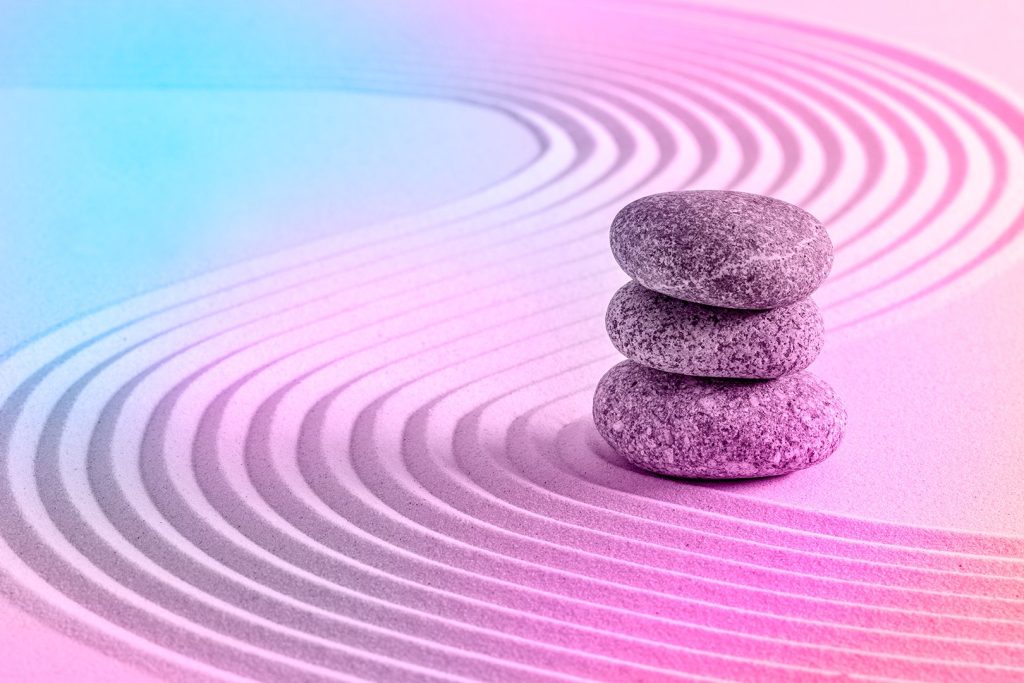
Top 5 Ways Mindfulness Can Transform Your Space and Mind
In today’s frenetic world, filled with endless notifications and responsibilities, the concept of mindfulness offers a refreshing counterbalance. Its ability to transform both physical spaces and the mental landscape makes it a powerful tool for personal growth. More than a trendy buzzword, mindfulness is a way of life, providing clarity and intention in everything we do. Let’s explore the top five ways mindfulness can revolutionize your environment and mental health, helping you embrace a lifestyle of simplicity and purpose.
5. Decluttering with Intention
Decluttering is not just a trend but a necessity for those seeking a minimalist lifestyle. However, without a mindful approach, it can become just another task on the to-do list. Mindful decluttering goes beyond the surface; it’s about taking the time to understand your relationship with your possessions. By asking compelling questions like “Does this item serve a purpose?” or “Does it support my wellbeing?” you make decisions not simply based on utility but guided by personal introspection.
This process often leads to surprising revelations. For instance, you may discover that certain items carry emotional weight that affects your mental well-being. By consciously parting with what no longer serves you, you simplify your surroundings and make space for what truly matters. This clarity doesn’t just reduce clutter; it enhances the quality of life by focusing on the essential.
4. Creating a Mindful Home Environment
After decluttering, the focus shifts to deliberately arranging your space. A mindful home is more than aesthetically pleasing; it’s a space designed to support your mental health. This can be accomplished by creating distinct zones that psychologically prepare you for the tasks at hand, such as dedicated spaces for reading or work.
Incorporating elements of nature—be it the soft light filtering through a window or the quiet presence of houseplants—can significantly impact your environment’s energetics. Studies have shown that access to natural light improves mood and productivity, while plants can reduce stress and even purify the air.
Limiting digital distractions is another essential step. Technology, while indispensable, can be overwhelming. By prioritizing simple decor and keeping electronics out of primary living areas, you cultivate a space that allows for thoughtfulness and relaxation.
3. Practicing Mindful Organization Techniques
The chaos of multitasking is a common productivity pitfall. Mindful organization encourages focus, reducing the overwhelm that comes from juggling simultaneous tasks. Techniques such as the Five Sensory Method ground you in the present moment by engaging all senses. Observe the tactile feeling of objects, the ambient sounds that create your environment, and the scents defining each room.
This sensory engagement isn’t just relaxing but fosters a deeper connection to your surroundings. A survey by the Journal of Environmental Psychology shows that individuals who engage in mindful sensory experiences often report higher satisfaction and emotional attachment to their environments. By centering attention on one task at a time, you not only enhance productivity but also find joy and purpose in the act of organizing.
2. Incorporating Mindfulness into Daily Routines
Regularly integrating mindfulness into daily routines multiplies its benefits. Setting aside time each day for mindfulness meditation can recalibrate your mental state, promoting calmness and clarity. Morning practices set a positive tone, influencing the rest of the day’s activities.
Physical activities like yoga or mindful walking can enhance both mental alertness and physical well-being. According to a study published in the Journal of Happiness Studies, regular mindfulness practices can increase life satisfaction by focusing attention on the present moment, reducing anxiety and depression.
Moreover, prioritizing tasks with full presence, so that each task is given its due attention, vastly improves efficiency and helps in maintaining organization. By living in the moment, each task becomes more than a chore; it’s an opportunity for mindful practice.
1. Cultivating a Mindful Mindset
At the core of profound transformation is the adoption of a mindful mindset. This means being aware of the thought patterns that contribute to stress and clutter. Journaling and gratitude practices are effective techniques for cultivating awareness. By regularly writing about your feelings and experiences, you start identifying the areas of life that require attention and simplification.
Gratitude practices, where you actively acknowledge the positives in life, can also adjust your mental focus. Instead of concentrating on what you lack, you celebrate what you have. Research suggests this shift increases happiness and decreases materialistic desires, simplifying your physical space and enriching your mental well-being.
In conclusion, mindfulness is an ongoing journey of personal discovery and environmental change. The five methods detailed here are not just strategies; they’re lifestyles that can immensely enrich your day-to-day existence. By embracing mindfulness, you regain control over your surroundings and nurture a deeper connection with your inner self. Discover the power of mindfulness, and watch as it brings profound peace and purpose to both your space and mind.
| Category | Key Features | Advantages | Disadvantages | Who Would Benefit Most |
|---|---|---|---|---|
| Mindful Decluttering | A practice focused on reducing physical clutter through mindfulness. | Increases clarity and enhances focus by maintaining organized spaces. | May require time and patience to fully engage in the process. | Individuals overwhelmed by clutter or stress from disorganized environments. |
| Mindfulness in Daily Routines | Incorporating mindfulness into daily habits like eating, cleaning, and commuting. | Promotes overall well-being, transforms mundane activities into intentional practices. | Initial resistance to change habitual behaviors may emerge. | Busy professionals or anyone seeking to find peace in everyday chaos. |
| Mindful Spaces | Creating environments designed to reduce stress and promote calmness. | Enhances mood and productivity by fostering positive energy and harmony. | Costs associated with redesigning spaces can be significant. | Homeowners and office workers desiring improved mental and emotional health. |
| Mindful Technology Use | Practices for using digital devices mindfully to avoid overwhelm. | Reduces anxiety and increases present moment awareness in a tech-driven lifestyle. | Can be challenging to break established technology habits. | Individuals experiencing stress from constant connectivity and information overload. |
Mindfulness has a profound impact not just on one’s mental clarity but also on the physical space in which an individual operates. Mindful decluttering encourages individuals to not merely discard items but to assess their physical possessions with a sense of awareness. This evaluation process redefines relationships with material belongings, leading to significant emotional liberation.With mindfulness woven into daily routines, even seemingly mundane tasks evolve into moments of self-connection and reflection. For example, choosing to savor each bite during meals transforms the act of eating into a nourishing ritual rather than a mindless chore.Creating mindful spaces is another transformative aspect. This involves curating one’s environment—be it at home or in an office—to nurture peace and enhance productivity. The careful selection of colors, textures, and layouts can bring about tranquility and inspire creativity.Equally crucial is the mindful use of technology, which mitigates the effects of a constantly connected world. By consciously engaging with digital tools rather than submitting to their demands, individuals can reclaim precious moments of presence, leading to a more balanced lifestyle. Overall, these components of mindfulness collectively promote a holistic approach toward personal organization and mental well-being.
Frequently Asked Questions About Mindfulness and Personal Organization
How can mindfulness help improve personal organization?
Mindfulness enhances self-awareness, allowing individuals to better identify and understand their organizational challenges. By cultivating a present-focused mindset, you can reduce distractions and improve attention to tasks at hand. This heightened focus aids in decluttering both physical spaces and mental processes, creating an environment that’s more conducive to productivity and relaxation.
What are some practical mindfulness techniques for decluttering my space?
Integrating mindfulness into your decluttering routine can start with techniques such as mindful breathing, which centers your thoughts before beginning a task. Another technique is the one-in-one-out rule, where you consciously consider bringing in a new item only if it’s necessary and beneficial. Additionally, practicing gratitude for each item you choose to retain reinforces intentional living and minimizes unnecessary accumulation.
Can mindfulness practices really impact mental health and productivity?
Studies suggest that mindfulness not only alleviates stress but also enhances mental clarity and focus. This has a cascading effect on productivity, as simple practices like meditation can reduce anxiety and bolster concentration, thus improving task execution. Furthermore, by fostering a peaceful mental state, mindfulness strengthens overall resilience and emotional health, ensuring you’re mentally equipped to tackle organizational challenges.
Are there specific tools or resources that can assist in combining mindfulness with organization?
Yes, numerous resources can guide you in merging mindfulness with organizational practices. Mobile applications like Headspace or Calm offer guided meditations focusing on reducing stress and increasing focus, helping you apply these skills to organizing tasks. Books such as “The Life-Changing Magic of Tidying Up” by Marie Kondo also weave mindfulness principles into decluttering advice, illustrating how conscious living can transform both your mental state and living spaces.
How long does it take to notice changes in my space and mind through mindfulness practice?
The impact of mindfulness on personal organization varies depending on consistency and individual circumstances. Some may observe initial improvements in mental clarity and focus within weeks, while long-term spatial and cognitive transformation might take several months. The key is to maintain a regular practice, remain patient, and stay open to gradual, profound changes in your environment and mental state.
Conclusion
The exploration of mindfulness and personal organization highlights the transformative potential of integrating attention and intention into daily routines. By bringing mindfulness into the realm of physical and mental spaces, individuals can experience profound changes in their environment and mental state.
Firstly, mindfulness encourages individuals to live in the present moment, allowing them to engage fully with their surroundings. This presence not only promotes a clearer and tidier physical space but also reduces mental clutter, creating a harmonious balance between the outer and inner worlds. In embracing mindfulness, one can find liberation from the chaos often associated with a disorganized mind.
Moreover, the article delves into the relationship between mindfulness and minimalism. By focusing on what truly matters, personal organization becomes not just about decluttering physical space but also about simplifying life’s complexities. Minimalism emphasizes quality over quantity, allowing for a more fulfilling and meaningful life.
Additionally, mindfulness fosters greater self-awareness, enabling individuals to understand their habits and make conscious choices about what they keep in their spaces and lives. This self-awareness is crucial for effective personal organization, leading to an environment that reflects one’s values and aspirations.
Ultimately, the mindful approach to organization aligns with the principles of minimalism, encouraging a lifestyle that values clarity and intentionality. As individuals continue to explore these concepts, they open themselves to new ways of thinking and living that prioritize well-being and simplicity.
For those intrigued by this synergy, further exploration into mindfulness practices and minimalist philosophy offers the opportunity to deepen understanding and create lasting change. By transforming both mind and environment, mindfulness acts as a powerful tool for personal organization and overall life satisfaction.
